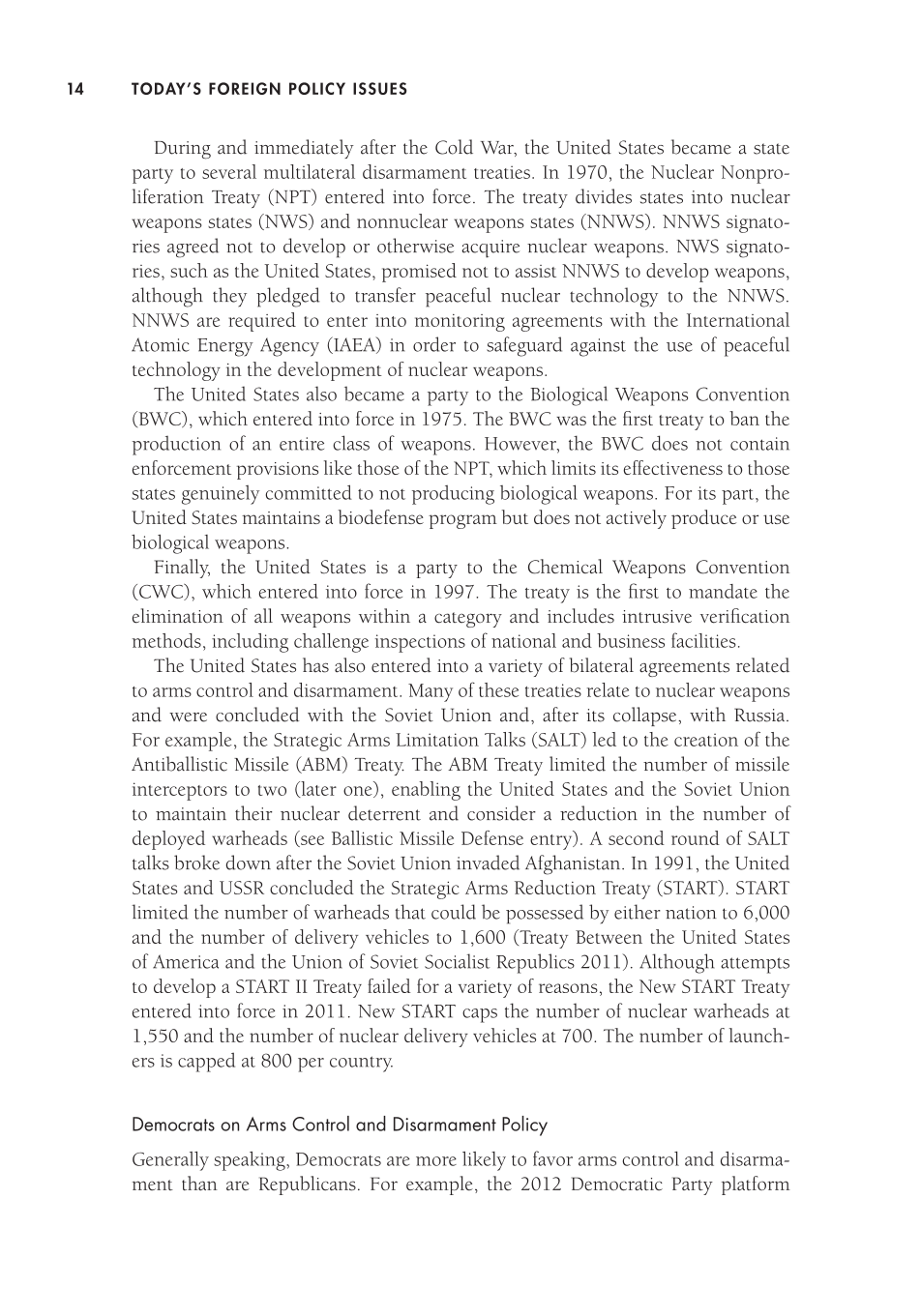todAY’s ForeIGn PoLICY Issues 14
During and immediately after the Cold War, the United States became a state
party to several multilateral disarmament treaties. In 1970, the Nuclear Nonpro-
liferation Treaty (NPT) entered into force. The treaty divides states into nuclear
weapons states (NWS) and nonnuclear weapons states (NNWS). NNWS signato-
ries agreed not to develop or otherwise acquire nuclear weapons. NWS signato-
ries, such as the United States, promised not to assist NNWS to develop weapons,
although they pledged to transfer peaceful nuclear technology to the NNWS.
NNWS are required to enter into monitoring agreements with the International
Atomic Energy Agency (IAEA) in order to safeguard against the use of peaceful
technology in the development of nuclear weapons.
The United States also became a party to the Biological Weapons Convention
(BWC), which entered into force in 1975. The BWC was the first treaty to ban the
production of an entire class of weapons. However, the BWC does not contain
enforcement provisions like those of the NPT, which limits its effectiveness to those
states genuinely committed to not producing biological weapons. For its part, the
United States maintains a biodefense program but does not actively produce or use
biological weapons.
Finally, the United States is a party to the Chemical Weapons Convention
(CWC), which entered into force in 1997. The treaty is the first to mandate the
elimination of all weapons within a category and includes intrusive verification
methods, including challenge inspections of national and business facilities.
The United States has also entered into a variety of bilateral agreements related
to arms control and disarmament. Many of these treaties relate to nuclear weapons
and were concluded with the Soviet Union and, after its collapse, with Russia.
For example, the Strategic Arms Limitation Talks (SALT) led to the creation of the
Antiballistic Missile (ABM) Treaty. The ABM Treaty limited the number of missile
interceptors to two (later one), enabling the United States and the Soviet Union
to maintain their nuclear deterrent and consider a reduction in the number of
deployed warheads (see Ballistic Missile Defense entry). A second round of SALT
talks broke down after the Soviet Union invaded Afghanistan. In 1991, the United
States and USSR concluded the Strategic Arms Reduction Treaty (START). START
limited the number of warheads that could be possessed by either nation to 6,000
and the number of delivery vehicles to 1,600 (Treaty Between the United States
of America and the Union of Soviet Socialist Republics 2011). Although attempts
to develop a START II Treaty failed for a variety of reasons, the New START Treaty
entered into force in 2011. New START caps the number of nuclear warheads at
1,550 and the number of nuclear delivery vehicles at 700. The number of launch-
ers is capped at 800 per country.
Democrats on Arms Control and Disarmament Policy
Generally speaking, Democrats are more likely to favor arms control and disarma-
ment than are Republicans. For example, the 2012 Democratic Party platform




























































































































































































































































































































































































































